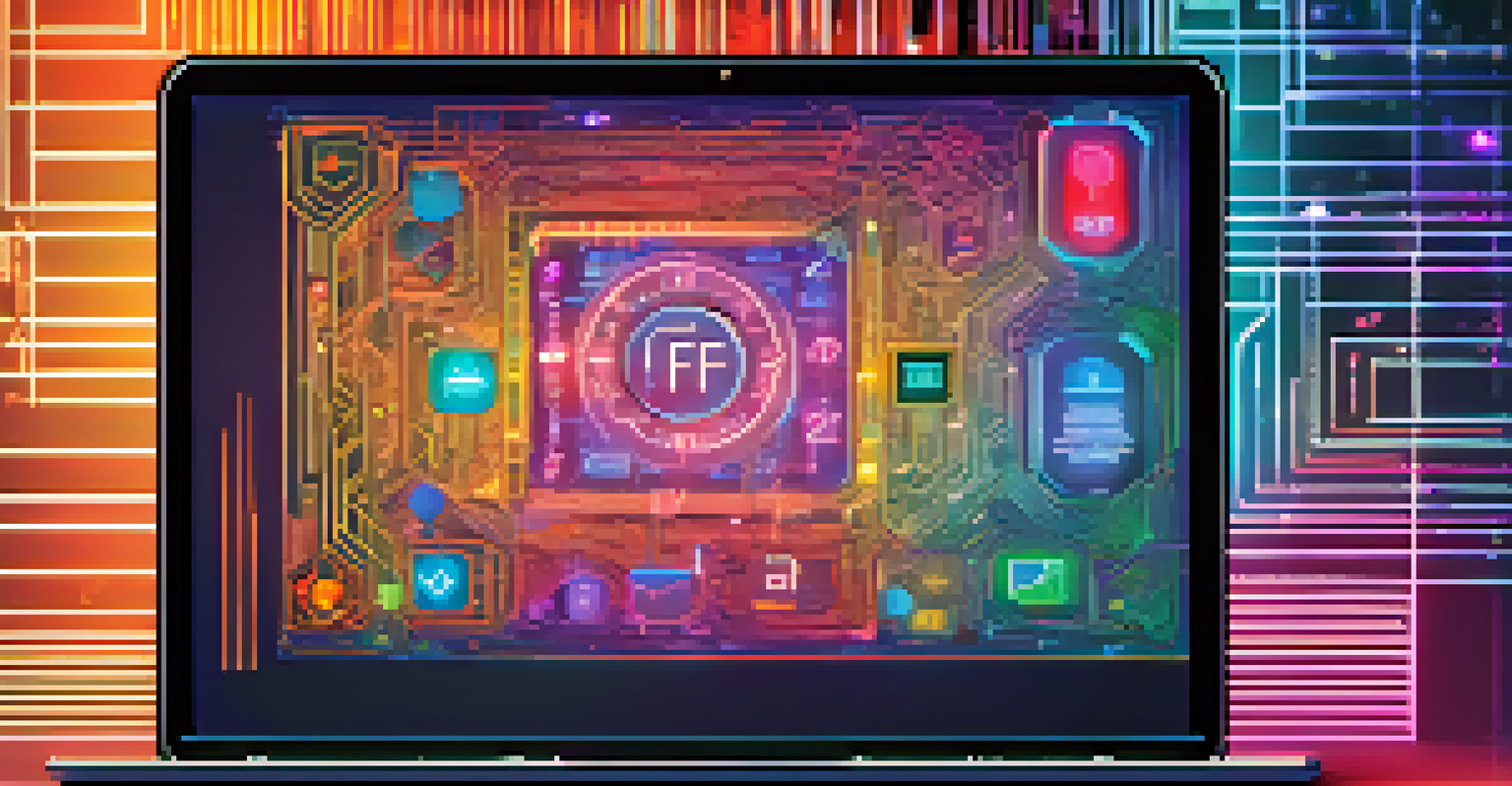The Role of Blockchain in Securing Digital Collectibles

What Are Digital Collectibles and Why They Matter
Digital collectibles are unique digital items, often represented as non-fungible tokens (NFTs), that can include art, music, and even virtual real estate. They have gained immense popularity, particularly in the realms of gaming and art, offering creators a new way to monetize their work. Much like physical collectibles, their value can appreciate over time, making them an attractive investment for collectors.
Digital collectibles are a new frontier in ownership and creativity, allowing artists and collectors to engage in ways never before possible.
The rise of digital collectibles ties closely to our increasingly digital lives. As we spend more time online, the desire to own and showcase unique digital items grows. This trend has led to a booming market where collectors are eager to own rare items, not just for personal enjoyment but also for potential future value.
However, the digital nature of these collectibles raises concerns about ownership and authenticity. This is where blockchain technology steps in, providing a solution that ensures security and transparency for collectors.
How Blockchain Works to Secure Digital Assets
At its core, blockchain is a decentralized ledger that records transactions across many computers. This means that once data is entered, it’s nearly impossible to alter or delete it, which is critical for maintaining the integrity of digital collectibles. Each transaction is time-stamped and linked to the previous one, creating a chain of records that is transparent and publicly accessible.

This transparency is beneficial for collectors; it allows them to verify the authenticity of a digital collectible easily. Buyers can trace the history of an item, confirming its previous ownership and ensuring they are not purchasing a counterfeit. This level of verification is something traditional collectibles have struggled with for years.
Digital Collectibles Use Blockchain
Digital collectibles, often represented as NFTs, leverage blockchain technology for security, authenticity, and ownership verification.
Additionally, the decentralized nature of blockchain minimizes the risk of a single point of failure. Unlike traditional systems where a central database can be hacked or manipulated, blockchain’s distributed network offers a higher level of security, making it a reliable choice for digital asset management.
The Benefits of Using Blockchain for Digital Collectibles
One of the primary benefits of blockchain in securing digital collectibles is its ability to provide proof of ownership. Each NFT is tied to a unique digital signature on the blockchain, making it clear who owns the asset at any given time. This reduces disputes and enhances trust among buyers and sellers in the marketplace.
Blockchain technology is not just about cryptocurrency; it is about trust, transparency, and creating a secure digital future.
Furthermore, blockchain technology facilitates smart contracts, which are self-executing contracts with the agreement written directly into code. For collectors, this means that transfers of ownership can occur seamlessly and automatically, without the need for intermediaries, reducing transaction costs and time.
Lastly, blockchain opens up new avenues for monetization for creators. They can earn royalties every time their digital collectibles are resold, thanks to the programmability of smart contracts, ensuring they benefit from their work long after the initial sale.
Challenges Facing Blockchain in Digital Collectibles
Despite its advantages, blockchain technology is not without challenges. One significant issue is the environmental impact of blockchain transactions, particularly those using proof-of-work systems, which require substantial energy to validate transactions. As collectors become more environmentally conscious, this aspect raises questions about the sustainability of certain blockchains.
Another challenge is the complexity of the technology itself. Many potential collectors may find the idea of blockchain intimidating or confusing, which can deter them from engaging in the digital collectibles market. Education and user-friendly platforms are essential to bridge this gap and encourage wider participation.
Proof of Ownership and Trust
Blockchain provides a transparent and secure method for collectors to verify the authenticity and ownership of digital items.
Lastly, regulatory uncertainty looms over the blockchain space. As governments and institutions work to create frameworks around digital assets, the evolving landscape can create unpredictability for collectors and creators alike, leading to concerns about future legal implications.
The Future of Digital Collectibles on Blockchain
The future of digital collectibles appears promising, especially as blockchain technology continues to mature and evolve. We can expect more user-friendly platforms and tools that simplify the process of buying, selling, and creating digital collectibles. As accessibility improves, a broader audience will likely engage in this exciting market.
Moreover, the integration of augmented reality (AR) and virtual reality (VR) into the blockchain realm could revolutionize how collectors interact with their possessions. Imagine showcasing your digital art in a virtual gallery or playing a game with unique digital items that have verified ownership on the blockchain.
As we move forward, collaborations between artists, developers, and blockchain experts will be vital. This synergy can lead to innovative applications of blockchain technology that enhance the way we think about ownership, creativity, and value in the digital age.
Why Collectors Should Consider Blockchain Technology
For collectors, embracing blockchain technology means entering a new era of trust and security. The ability to verify authenticity and ownership with ease is a game changer, especially in a market where forgery and imitation can be prevalent. Blockchain eliminates these concerns, allowing collectors to focus on what truly matters: their passion for collecting.
Moreover, the potential for investment growth cannot be overlooked. Many early adopters of digital collectibles have seen significant returns as the market has exploded. With blockchain providing a transparent and secure environment, collectors can feel more confident in their investment choices.
Challenges and Future Outlook
Despite its advantages, blockchain faces environmental, educational, and regulatory challenges, but its future in digital collectibles remains promising.
In addition, as the community around digital collectibles grows, so does the opportunity for social interaction and networking. Engaging with fellow collectors and creators can lead to new collaborations, inspiration, and even friendships—all facilitated by the shared interest in blockchain-secured assets.
Conclusion: Embracing the Blockchain Revolution in Collectibles
In conclusion, blockchain technology is reshaping the landscape of digital collectibles, offering unprecedented levels of security, authenticity, and ease of use. As the market continues to evolve, collectors who adapt and embrace these changes will be better positioned to thrive in this exciting digital frontier.
The benefits of blockchain are clear: proof of ownership, reduced transaction costs, and innovative monetization opportunities for creators. However, as with any emerging technology, it's essential to stay informed about the challenges and developments in the space.

By understanding and leveraging blockchain, collectors can enjoy a more secure, engaging, and rewarding experience in the world of digital collectibles, paving the way for a vibrant future.